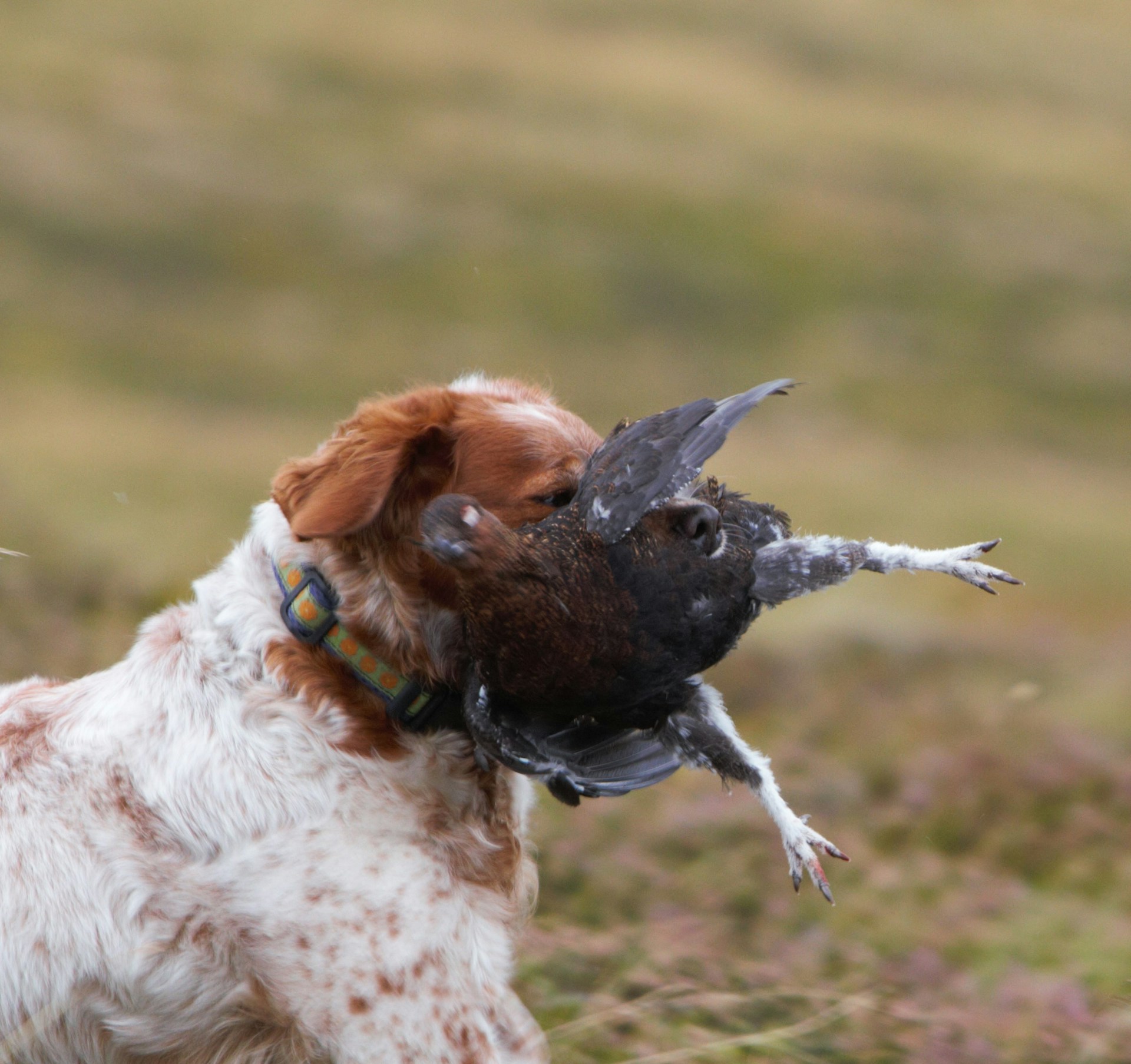“Punish My Dog for Killing a Bird“: Understanding Canine Instincts and Finding the Right Approach
Introduction
Dogs, our four-legged pals, have a history that involves a lot of hunting. Even though we’ve brought them into our homes and pampered them, that hunting instinct hasn’t gone anywhere. It’s like a little reminder of their wild past.
Now, think about this scenario: Your dog, the one you’ve shared countless snuggles with, suddenly decides to go after a bird and, well, catches it.
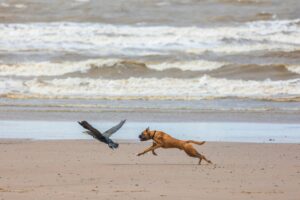
It can be a bit of a shock, and the first thought that might pop up is, “Should I punish my dog for being, well, a dog?”
Let’s explore this. Dogs aren’t being naughty; they’re just following their instincts. But how do we, as responsible pet parents, respond to such moments? It’s a bit of a puzzle, and there’s no one-size-fits-all answer.
Some say it’s all part of being a dog, while others lean towards correction. Finding the right approach might involve understanding your dog’s unique personality and figuring out what works best for both of you.
Remember, dogs are fantastic creatures, and they might surprise us with their quirks. Instead of immediately reaching for punishment, let’s take a moment to understand their behavior and explore positive ways to guide them.
Punish My Dog for Killing a Bird
So, should you punish your dog for this behavior?
In the grand scheme of things, it’s not right to harm innocent birds without a valid reason, isn’t it? The quick response is, no, you shouldn’t penalize your dog, but at the same time, allowing them to continue the behavior isn’t the answer.

The more detailed answer is also a negative, but it requires some extra consideration, primarily because you, understandably, view this from a human perspective.
Dogs don’t perceive this conduct the way we do, so they’re not aware that they’re doing something considered wrong. Let’s delve into a few reasons why dogs kill birds initially. This should give you a better understanding of why your dog acts this way.
Reasons Dogs Kill Birds and Other Small Animals
Prey Drive
The most likely reason your dog engages in the behavior of chasing and potentially killing birds or other small animals is connected to his prey drive.
This instinct, embedded in your dog’s DNA, compels him to hunt, stalk, chase, catch, or even kill birds—a behavior inherited from his ancestral roots, where wolves and wild dogs had to actively hunt for their meals instead of being provided two daily meals like the modern pet dog.
Despite having a well-fed dog, the act of a dog killing birds isn’t driven by hunger.
Observing the movement of small animals acts as a trigger, activating a sort of instinctual switch in his brain. This instinct is turned on, causing him to become laser-focused.
If you’ve ever wondered why your dog appears to completely ignore your calls while in pursuit of a prey animal, this is the explanation. His tunnel vision kicks in, tuning out everything else, including any other distractions in his vicinity.
So, understanding why your dog kills birds involves recognizing and addressing this inherent prey drive.
Related Posts :
Let’s understand Is Pura Safe for Cats?
Let’s understand Why Do Cats Like Straws?
Let’s Understand Why Does My Cat Get a Red Rocket When I Pet Him? 5 Facts
Breeding
While the prey drive is a common trait in most dogs, varying in intensity among breeds, there are specific dog breeds intentionally bred for hunting birds and other critters in distinct ways.
For instance, a herding breed like a Cattle Dog or Border Collie might revel in the chase, a Hound may silently stalk its prey, and a Labrador could eagerly dive into the water after a flock of ducks—while being gentle if she catches one with her soft mouth.
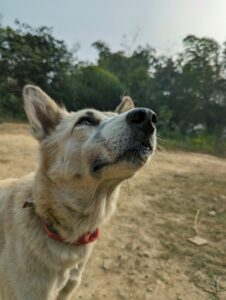
These breed-specific behaviors trace back to deliberate breeding practices, where humans crafted certain breeds for particular purposes.
If you notice that your pup has a preference for chasing specific animals, such as birds, or exhibits a unique hunting style, it’s likely a result of their breed.
For instance, my terrier finds joy in chasing birds for fun, but her excitement reaches another level when she spots a squirrel or a rat.
This highlights how breeds were selected for specific purposes; in her case, the breed was developed to tackle vermin on farms over a century ago, and that trait persists in her genetics today.
Rough Play
While not all dogs exhibit a strong prey drive, many tend to engage in rough play, particularly when the playmate is smaller than the dog in question.
A dog might seem like he’s on the hunt for a bird when, in reality, all he wants is to play with it—whether or not the bird shares the interest is another story altogether!
Just as dogs have the instinct to chase, birds possess a similar instinct to flee for their survival, triggering the dog to chase even more, creating a loop.
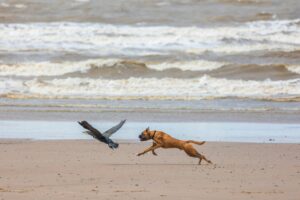
Regrettably, when dogs play with birds, unintended injuries or even fatalities can occur due to the rough nature of the play.
While most birds can swiftly escape, this isn’t always the case. The sheer size difference can pose a risk to the bird, leaving your dog puzzled as to why his newfound friend doesn’t want to play anymore.
Why You Shouldn’t Punish Your Dog
Things You Can Do to Prevent Your Dog Killing Birds
Now that we’ve dissected the most common causes of this behavior and highlighted the reasons not to punish your dog, let’s shift gears to a more proactive approach.
Here are a few things you can do to prevent your pup from engaging in the act of killing birds and other small animals in the first place:
Keep Him on Leash
To prevent your pup from chasing after birds in the first place, consider keeping her on a leash in areas where you anticipate the presence of birds. This might include your neighborhood park, frequented nature trails, or any other areas where birds are likely to be chased.
Remember, an ounce of prevention is worth a pound of cure, so managing your dog’s access to birds becomes a crucial starting point.
If you’re concerned about restricting your pup’s freedom, a long-line leash could be a solution. These leashes come in varying lengths, from 10 feet up to 50 feet, offering her the freedom of being off-leash while you maintain control.
It might take a bit of practice to master the art of the long line, so don’t get discouraged if you find yourself a bit tangled on your first walk with it. With a few tries, you’ll discover what works best for you, and you’ll become a pro in no time!
Save Off-Leash Play for Controlled Areas
All dogs deserve (and need) to run and play freely regularly, so when it’s time for your dog to play off-leash, consider taking her to a controlled area that likely won’t have too many birds for her to chase.
This could be somewhere like your local dog park (which any smart bird will avoid), a fenced-in field, another green area, or even your backyard if you have one.
Providing your dog with a designated play area without the distraction of birds allows her to burn off pent-up energy, get the necessary exercise for her overall well-being, and lets you relax without worrying about potential bird encounters.
Allowing her to freely sniff around utilizes her mental energy, giving her a sense of thorough exercise and helping her to calm down, ultimately reducing her desire to chase.
Teach a Solid Recall
One crucial aspect every dog owner should grasp is the significance of teaching a rock-solid recall. Not only does this prove handy when your dog starts chasing birds and other small animals, but it can also be a lifesaver in situations involving cars or other potential dangers he might not be aware of.
The optimal time to implement this is the moment your dog seems inclined to take off running, but with practice, it can be effective even when he’s in full gallop.
The best approach to achieve this is to frequently call your dog to you, seemingly for no reason and at various times throughout the day. Upon his arrival, shower him with praise and offer the most enticing treats you can muster—cooked chicken, hot dogs, or any delectable and aromatic treat.
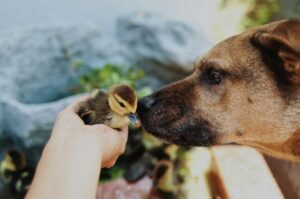
Soon enough, he’ll associate the sound of his name being called with a delightful reward, making this command more appealing than anything else he might find interesting!
Consistent practice, and gradually increasing distractions, are the key to mastering this skill. With time and persistence, he’ll get the hang of it!
In conclusion, when pondering the complex behavior of dogs chasing and, at times, killing birds, it’s crucial to recognize that our furry companions are often acting on instinct rather than malice. Understanding the root causes, such as the innate prey drive, breed-specific traits, and the natural playfulness of dogs, sheds light on their behavior.
Related Posts :
Let’s understand Is Pura Safe for Cats?
Let’s understand Why Do Cats Like Straws?
Let’s Understand Why Does My Cat Get a Red Rocket When I Pet Him? 5 Facts
Conclusion
It becomes evident that the knee-jerk reaction to “Punish My Dog for Killing a Bird” may not be the most effective or humane approach.
Punishment, often rooted in a human perspective, can lead to confusion, fear, and, in the long run, strained bonds between the dog and their owner.
Dogs operate on a different wavelength, and their actions are not driven by malicious intent.
Instead of resorting to punishment, a proactive stance involves managing a dog’s access to birds, employing tools like long-line leashes, and providing designated off-leash areas with controlled environments.

Furthermore, emphasizing the importance of a robust recall command not only aids in redirecting the dog’s attention but also proves to be a life-saving skill in various situations.
By reframing our understanding of dogs’ actions and adopting positive reinforcement strategies, we can foster a stronger bond with our pets.
The key lies in appreciating their instincts, respecting their traits, and steering away from knee-jerk reactions that could hinder the trust and connection we share with our beloved canine companions.
Frequently Asked Questions
Here are some of the FAQs related to Should I Punish My Dog for Killing a Bird?

